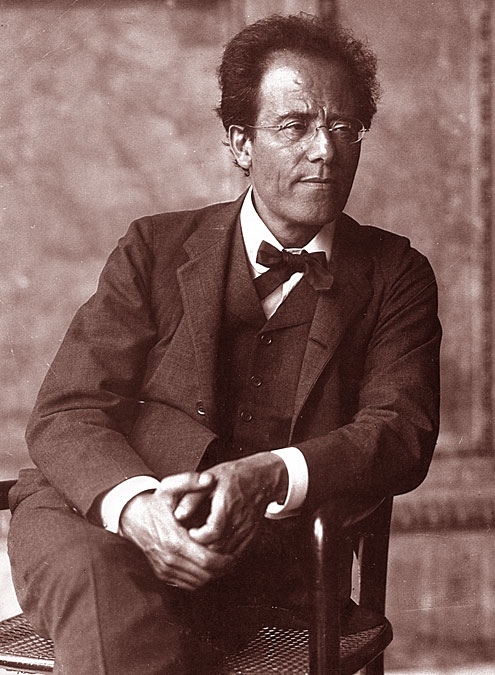
Grieg’s Peer Gynt Suite is incidental music based on Henrik Ibsen’s play based on a Norwegian Fairy tale bearing the same name. The World premiere took place in Norway in 1876. Grieg decided to compose two suites. The four musical sections are Morning: allegretto pastoral; The Death of Ase: andante doloroso; Anitra’s Dance: tempo di mazurka and In the Hall of the Mountain King: alla marcia e molto marcato
The strings played a huge role in capturing the beginning of day in the beautiful mountains and forests of Norway. Anitra’s dance evoked the gracefulness of Anitra, with whom Peer Gynt is infatuated. In the Hall of the Mountain King is considered to be Grieg’s most known work as the melody depicts the bizarre dances of gnomes. Each repetition with performed with high energy by the orchestra. Flautist Laurie Camphaus, Bassoonist Amy Duxbury and percussionist Norman Peck (wood block) added perfect details to this exceptional performance.
The score of Mahler’s first symphony is marked “Wie ein Naturlaut” (Like a sound of nature). The opening movement weaves the imagination and narrative of the symphonic poem in a way that changed the genre forever. The movement is designated “Slowly dragging, always very restrained,” and is not based on a theme or a rhythm, but on the timpanist John Weeks gentle, but relentless.
Under the meticulous scrutiny of Maestro Stewart, the opening measures were performed with wonderful balance. The pastoral “nature” theme slowly developed with cuckoo cries by the flutes, a bit later by the clarinets.
The orchestra introduced a rural folk dance and popular tunes of the time for which Mahler would become notorious. Of special note were the many fanfares performed by the eight horns, trumpets and winds that were all spot on with crisp, in tune entrances and impressive dynamic balance that filled the Mello Center.
In the opening the third movement, the quite strange funeral march in the minor-key version of the children’s round Frere Jacques made its entry. The musical idea switched from one extreme to another; Bohemian street bands, klezmer inflections, at times happy and sometimes an eerie and brooding mood.
The fourth and final movement brought back several elements tying the beginning with the end continuing from the third without pause and opened with an abrupt cymbal crash followed by dissonant chord produced by the woodwinds, brass and string sections and amplified by the bass drum all in succession.
Sincere accolades to the many soloists who performed with artistry from the brass (Susan Vollmer), the entire wind section (Karen Sremac, Bennie Cottone), string and percussion (John Weeks, Norman Peck) sections under the Maestro’s direction.
In classic gesture, Maestro Stewart demonstrated his approval by personally congratulating the entire orchestra. A most enjoyable first class performance!